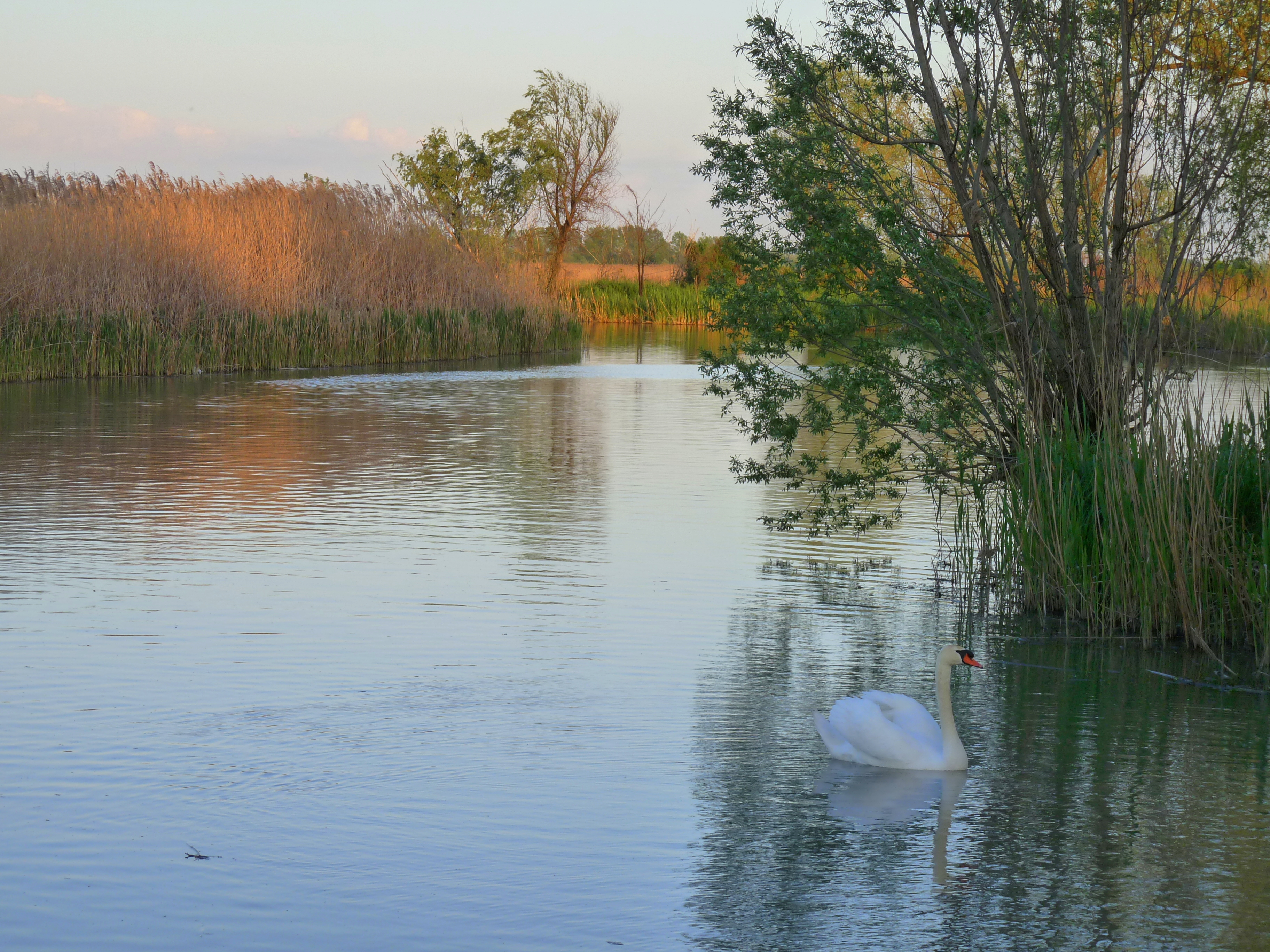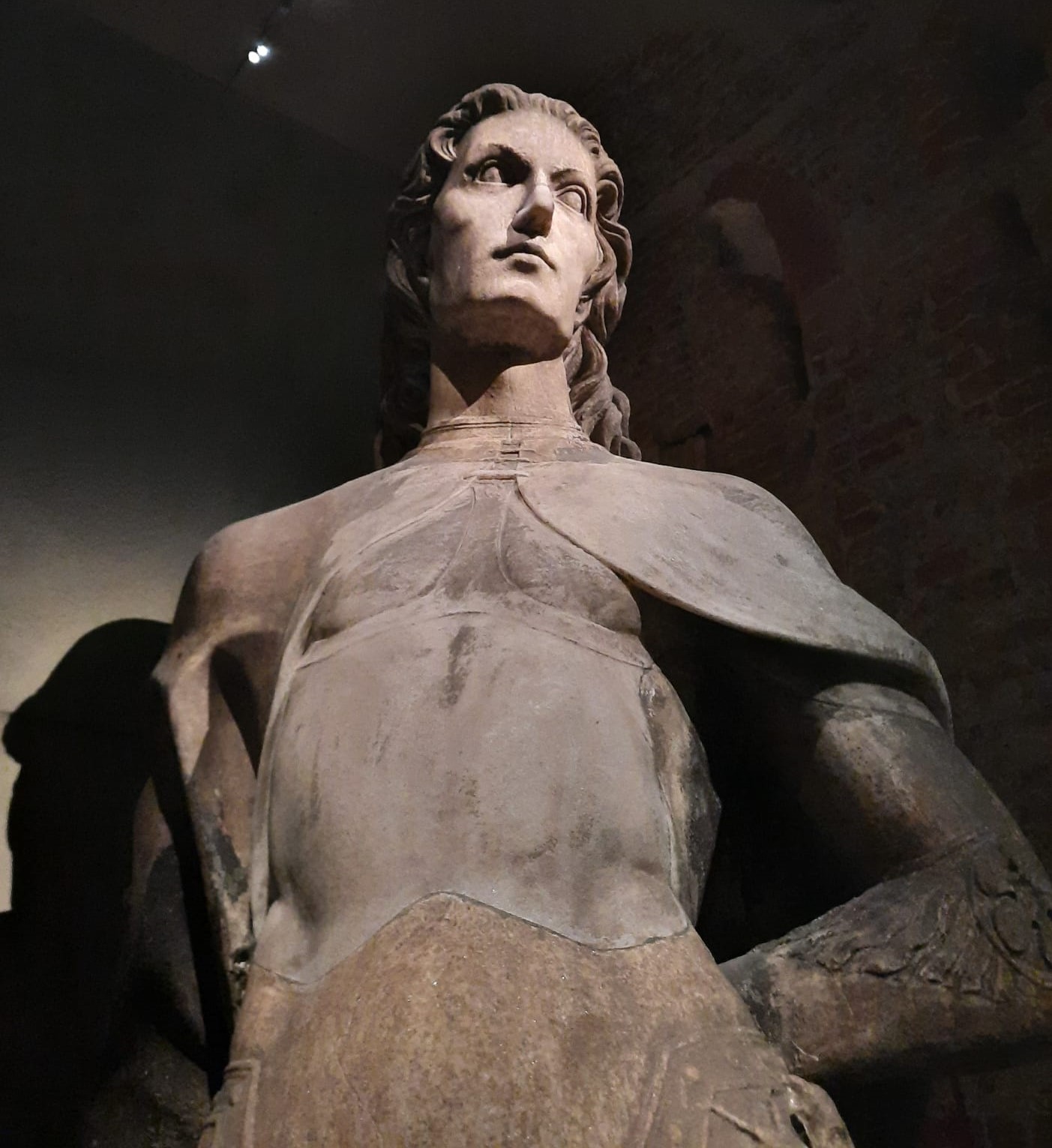|
Villa Giraffa, Goito
Villa Giraffa is a rural palace located on the banks of the Mincio River, near the town of Goito, province of Mantua, Lombardy, Italy. It was initially remodeled in the 15th century as a villa by the ruling Gonzaga family. History While the villa has Renaissance-style elements, it also incorporates styles from various refurbishments over the centuries.. The villa is named after a twentieth century Giraffe statue in one of the courtyards. Isabella d'Este, wife of the Marquis Francesco II Gonzaga, donated the villa to the Capuchin order The Order of Friars Minor Capuchin (; postnominal abbr. OFMCap) is a religious order of Franciscan friars within the Catholic Church, one of three " First Orders" that reformed from the Franciscan Friars Minor Observant (OFMObs, now OFM), the o ..., wherein they established a monastery. The monks were expelled by the Napoleonic government, and the buildings were made into a military hospital. Later the building was used as an inn and a school. Pre ... [...More Info...] [...Related Items...] OR: [Wikipedia] [Google] [Baidu] |
Mincio River
The Mincio (; ; ; ; ) is a river in the Lombardy region of northern Italy. The river is the main outlet of Lake Garda. It is a part of the ''Sarca-Mincio'' river system which also includes the river Sarca and the Lake Garda. The river starts from the south-eastern tip of the lake at the town of Peschiera del Garda and then flows for about past Mantua and into the river Po. From Lake Garda until it reaches Pozzolo, it forms the boundary between Veneto and Lombardy regions. In the Etruscan period, the Mincio probably joined with the river Tartaro and flowed into the Adriatic Sea into the pit Filistina, in Roman Republic it was made to flow into the Po with three branches from Mantua by Quintus Curius Hostilius, subsequently reunited in a single embanked in 1198 on a project by Alberto Pitentino and regulated its course with several dams ( Ponte dei Mulini, Mantua) and the Governolo) dam to make it navigable, to prevent Mantua from being flooded by the flooding of the Po ... [...More Info...] [...Related Items...] OR: [Wikipedia] [Google] [Baidu] |
Goito
Goito ( Upper Mantovano: ) is a ''comune'' with a population of 10,005 in the Province of Mantua in Lombardy. Goito is north of Mantua on the road leading to Brescia and Lake Garda, and straddles the old east–west Via Postumia between Cremona and Verona. The town is on the right bank of the Mincio River at a key crossing. The birthplace of Sordello, Goito is part of the historic region known as Alto Mantovano ( Upper Mantua) and was the site of a notable fortress. Etymology ''Goito'' generally indicates an area of Gothic settlement, and is a common toponym in Italy; a similar example is '' godega''. In 1902, Italian legal scholar Nino Tamassia published a document from 1045 which was brought to his attention by scholar F. C. Carreri and indicated that at least some of Goito's inhabitants said that they still lived "according to Gothic law" (''"qui professimus legem vivere Gothorum"''). Local histories by Federico Amedei, Livio Calafassi and Giovanni Tassoni have agreed on t ... [...More Info...] [...Related Items...] OR: [Wikipedia] [Google] [Baidu] |
Province Of Mantua
The province of Mantua (; Emilian language#Dialects, Mantuan, Emilian language#Dialects, Lower Mantuan: ; Emilian language#Dialects, Upper Mantuan: ) is a Provinces of Italy, province in the Lombardy region of Italy. Its capital is the city of Mantua. It is bordered to the north-east by the province of Verona, to the east by the province of Rovigo, to the south by the province of Ferrara, province of Modena, province of Reggio Emilia, and province of Parma, to the west by the province of Cremona, and to the north-west by the province of Brescia. History Founded in the tenth century BCE on the plain formed by meanders of the River Mincio, Mantua became an Etruscan civilization, Etruscan town and important trading post for pottery and agricultural products. Despite its defensible position, it was unable to withstand the Celts, Celtic invaders in the sixth and fifth centuries BC who overwhelmed it, and the whole area was later conquered by the Ancient Rome, Romans. By the fifth cen ... [...More Info...] [...Related Items...] OR: [Wikipedia] [Google] [Baidu] |
Lombardy
The Lombardy Region (; ) is an administrative regions of Italy, region of Italy that covers ; it is located in northern Italy and has a population of about 10 million people, constituting more than one-sixth of Italy's population. Lombardy is located between the Alps mountain range and tributaries of the river Po (river), Po, and includes Milan, its capital, the largest metropolitan area in the country, and among the largest in the EU. Its territory is divided into 1,502 ''comuni'' (the region with the largest number of ''comuni'' in the entire national territory), distributed among twelve administrative subdivisions (eleven Provinces of Italy, provinces plus the Metropolitan City of Milan). The region ranks first in Italy in terms of population, population density, and number of local authorities, while it is fourth in terms of surface area, after Sicily, Piedmont, and Sardinia. It is the second-most populous Region (Europe), region of the European Union (EU), and the List of ... [...More Info...] [...Related Items...] OR: [Wikipedia] [Google] [Baidu] |
House Of Gonzaga
The House of Gonzaga (, ) is an Italian princely family that ruled Mantua in Lombardy, northern Italy from 1328 to 1708 (first as a captaincy-general, then Margraviate of Mantua, margraviate, and finally Duchy of Mantua, duchy). They also ruled Monferrato in Piedmont and Nevers in Kingdom of France, France, as well as many other lesser fiefs throughout Europe. The family includes a Aloysius Gonzaga, saint, twelve Cardinal (Catholic Church), cardinals and fourteen bishops. Two Gonzaga descendants became empresses of the Holy Roman Empire (Eleonora Gonzaga (1598–1655), Eleonora Gonzaga and Eleonora Gonzaga (1630–1686), Eleonora Gonzaga-Nevers), and one became Queen of Poland and Grand Duchess of Lithuania in the Polish–Lithuanian Commonwealth (Marie Louise Gonzaga). History The first members of the family of historical importance are known to have collaborated with the Guelphs and Ghibellines, Guelph faction alongside the monks of the Polirone Abbey. Starting from the 12th cen ... [...More Info...] [...Related Items...] OR: [Wikipedia] [Google] [Baidu] |
Renaissance Architecture
Renaissance architecture is the European architecture of the period between the early 15th and early 16th centuries in different regions, demonstrating a conscious revival and development of certain elements of Ancient Greece, ancient Greek and Ancient Rome, Roman thought and material culture. Stylistically, Renaissance architecture followed Gothic architecture and was succeeded by Baroque architecture and neoclassical architecture. Developed first in Florence, with Filippo Brunelleschi as one of its innovators, the Renaissance style quickly spread to other Italian cities. The style was carried to other parts of Europe at different dates and with varying degrees of impact. It began in Florence in the early 15th century and reflected a revival of classical Greek and Roman principles such as symmetry, proportion, and geometry. This movement was supported by wealthy patrons, including the Medici family and the Catholic Church, who commissioned works to display both religious devot ... [...More Info...] [...Related Items...] OR: [Wikipedia] [Google] [Baidu] |
Isabella D'Este
Isabella d'Este (19 May 1474 – 13 February 1539) was the Marchioness of Mantua and one of the leading women of the Italian Renaissance as a major cultural and political figure. She was a patron of the arts as well as a leader of fashion and her innovative style of dressing was emulated by many women. The poet Ariosto labeled her as the "liberal and magnanimous Isabella", while author Matteo Bandello described her as "supreme among women". Diplomat Niccolò da Correggio went even further by hailing her as "The First Lady of the world". She served as the regent of Mantua during the absence of her husband Francesco II Gonzaga and during the minority of her son Federico. She was a prolific letter-writer and maintained a lifelong correspondence with her sister-in-law Elisabetta Gonzaga. Isabella grew up in a cultured family in the city-state of Ferrara. She received a fine classical education and she met many famous humanist scholars and artists. Due to the vast amount of e ... [...More Info...] [...Related Items...] OR: [Wikipedia] [Google] [Baidu] |
Francesco II Gonzaga
Francesco II Gonzaga (10 August 1466 – ) was the ruler of the Italian city of Mantua from 1484 until his death. Biography Francesco was born in Mantua, the son of Marquis Federico I Gonzaga. Francesco had a career as a condottiero acting as Venice's commander from 1489 to 1498. He was the commander-in-chief of the army of the Italian league in the battle of Fornovo, under the tutorage of his more experienced uncle Ridolfo Gonzaga: even though Francesco was unable to stop Charles VIII and his army from returning to France, he claimed Fornovo as a victory. Francesco was described as "short, pop-eyed, snub-nosed and exceptionally brave, and was regarded as the finest knight in Italy". Francesco briefly commanded the Venetian army, but in 1502 he left to pay his respects to Louis XII who was then at Milan. By 29 April, he was with Louis XII when Genoa fell to the French army. Francesco, taking the initiative after the French victory at Agnadello, was occupying lands that he had ... [...More Info...] [...Related Items...] OR: [Wikipedia] [Google] [Baidu] |
Capuchin Order
The Order of Friars Minor Capuchin (; postnominal abbr. OFMCap) is a religious order of Franciscan friars within the Catholic Church, one of three " First Orders" that reformed from the Franciscan Friars Minor Observant (OFMObs, now OFM), the other being the Conventuals (OFMConv). Franciscans reformed as Capuchins in 1525 with the purpose of regaining the original Habit (tunic) of St. Francis of Assisi and also for returning to a stricter observance of the rule established by Francis of Assisi in 1209. History Origins The Order arose in 1525 when Matteo da Bascio, an Observant Franciscan friar native to the Italian region of Marche, said he had been inspired by God with the idea that the manner of life led by the friars of his day was not the one which their founder, St. Francis of Assisi, had envisaged. He sought to return to the primitive way of life of solitude and penance, as practised by the founder of their Order. His religious superiors tried to suppress these i ... [...More Info...] [...Related Items...] OR: [Wikipedia] [Google] [Baidu] |






